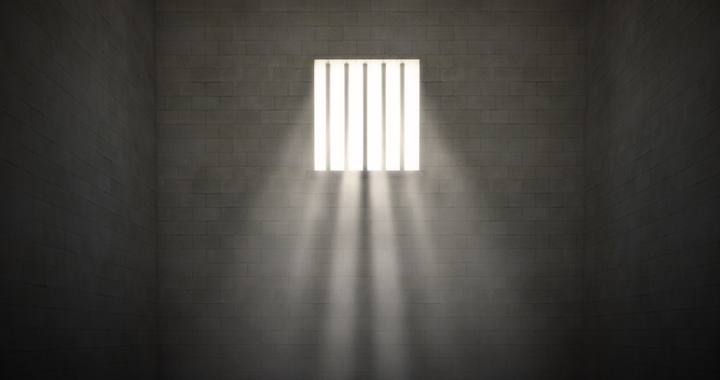It was in the early ‘60s, and the civil rights movement, along with the Vietnam War were headline news items. Civil disobedience was being practiced by students on campuses of universities and colleges all across America, so it was no surprise that, when I spoke for a lecture series at a Midwestern university, a student should rise and ask: “Professor? Can Christians practice civil disobedience?”
My response was forthright and, I thought, biblically based. Referring to the 13th chapter of Paul’s Epistle to the Romans, I read, “Let every soul be subject to the higher powers for there is no power but of God; The powers that be are ordained of God. Whosoever therefore resists the power, resisteth the ordinance of God, and they that resist shall receive in themselves damnation.” I went on to say, “Doesn’t that answer your question?”
The young man responded with another question: “But where was Paul when he wrote that, anyway?”
I took a deep breath, and then said, “Well, to be frank with you, he was in jail!”
“How did he get there, preacher?” he inquired.
“Well, that’s a long story, ” I answered, “and I’d rather not go into it.”
With a slight smile, he said, “It’s really not too complicated, and if you don’t mind, preacher, I would like to tell the students here how Paul got put in jail. You see, there was trouble in the early Church back then. The Jews and Gentiles didn’t want to worship together. You know how it is; people from the different races have different kinds of music and different ways of carrying on at worship services. So the Apostles got together in what was called The Council of Jerusalem in order to solve this problem of how people from these two different racial groups should relate to each other. Now, if we substitute the word “white” for “Jews” and the word “black” for “Gentiles, ” you get the total picture of what I am driving at.”
Related: Why Do It, Nelson Mandela? by Jamie Arpin-Ricci
“So Paul decided to go to that council in Jerusalem, but he decided that he would make a point by making the trip with a traveling companion who was a Gentile. Now, in those days preacher, Jews and Gentiles didn’t travel together, so when the two of them got on the boat together and bunked out in the same cabin, they were kind of breaking the rules and regulations of the day. I don’t know what you call that, preacher, but it sounds like the first freedom ride to me.”
“Then, when they got to Jerusalem, Paul and his friend from that other race decided to eat together – in public view. That upset a lot of people because Jews and Gentiles didn’t eat together back then. They had segregated eating places in those days, but Paul and his friend did it anyway. I don’t know what you call that, preacher, but it sounds like the first sit-in to me.”
“After they finished eating, these two breakers of the Jewish laws and regulations headed down Main Street to the temple. The Jews down there in Jerusalem, who were already upset with Paul and his friend, had a pretty good idea where they were heading. They figured that this Jew and this Gentile were heading to the temple.
Now, preacher, it’s one thing to have a freedom ride and another thing to have a sit-in, but these two trouble-makers were going to stage a pray-in, and everybody knew it. Paul was going to take this uncircumcised Gentile into a holy place where only Jews were supposed to be able to go. When the crowd realized what was happening they rioted, and then the Roman soldiers stepped in and took these two trouble makers into ‘protective custody.’ You know how the police can do that sort of thing, don’t you, preacher? You read about that sort of thing in the newspapers almost daily.”
“Well, while they were in jail, waiting for their court hearing, Paul and his friend were beaten up by those Roman soldiers. I don’t know what you call that, preacher, but it sounds like a good example of ‘police brutality.’
When Paul finally gets his case heard before the magistrates of the town, he announces that they can’t just push him around like they did and get away with it, because he holds Roman citizenship. So Paul says he wants to appeal his case to the Supreme court. In those days, preacher, the Supreme court was located in Rome.
Also by Tony: Red Letter Christianity vs. the Prosperity Theology
It’s on his way to Rome that Paul wrote to the Christians in Rome. After breaking all the rules and regulations that established social order in his day for the relationships between two different races, he writes and tells the Roman Christians that they ought to be subject to the higher powers. Now, how could he do that after he himself hadn’t obeyed the higher powers when it came to the ways he and his Gentile friend had behaved?”
“I know that later on, Paul makes his case by saying that in the end he had to obey God rather than the rules that people create when there’s conflict between the two, and it was in obedience to a God who recognized no division between the races that Paul practiced civil disobedience. What are you going to do with that story, Preacher?”
Needless to say, I didn’t know what to do with that story, except to reflect on it time and time again until I changed my mind about civil disobedience.
—
Tony Campolo is the Founder and President of EAPE and Professor Emeritus of Sociology at Eastern University. Most recently he co-authored Red Letter Revolution: What If Jesus Really Meant What He Said with Shane Claiborne. Look for Tony in your area and follow him on Facebook and Twitter.

